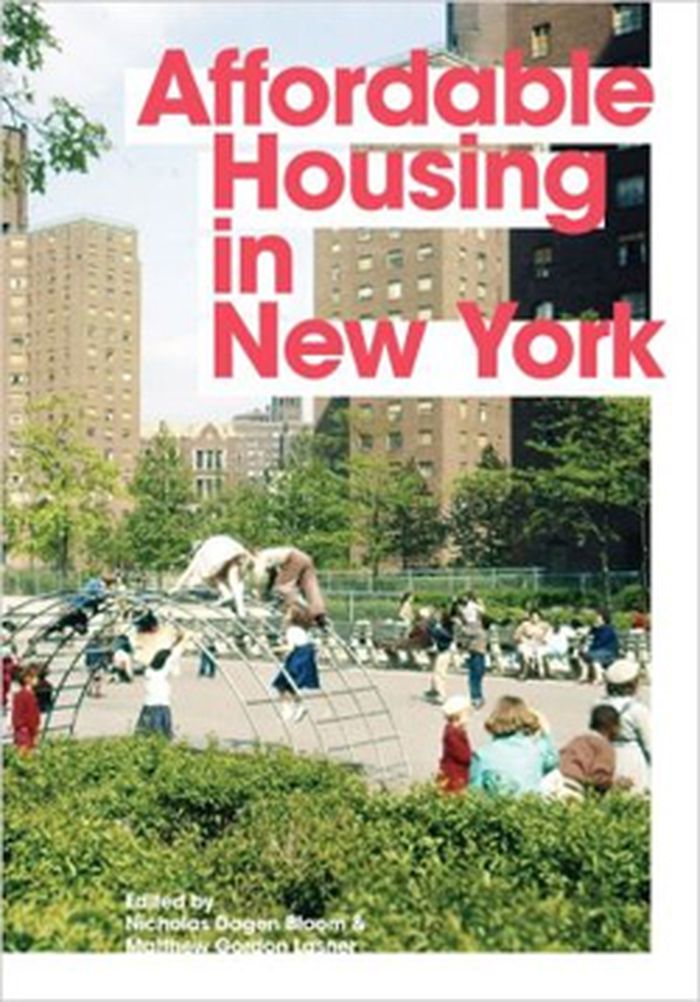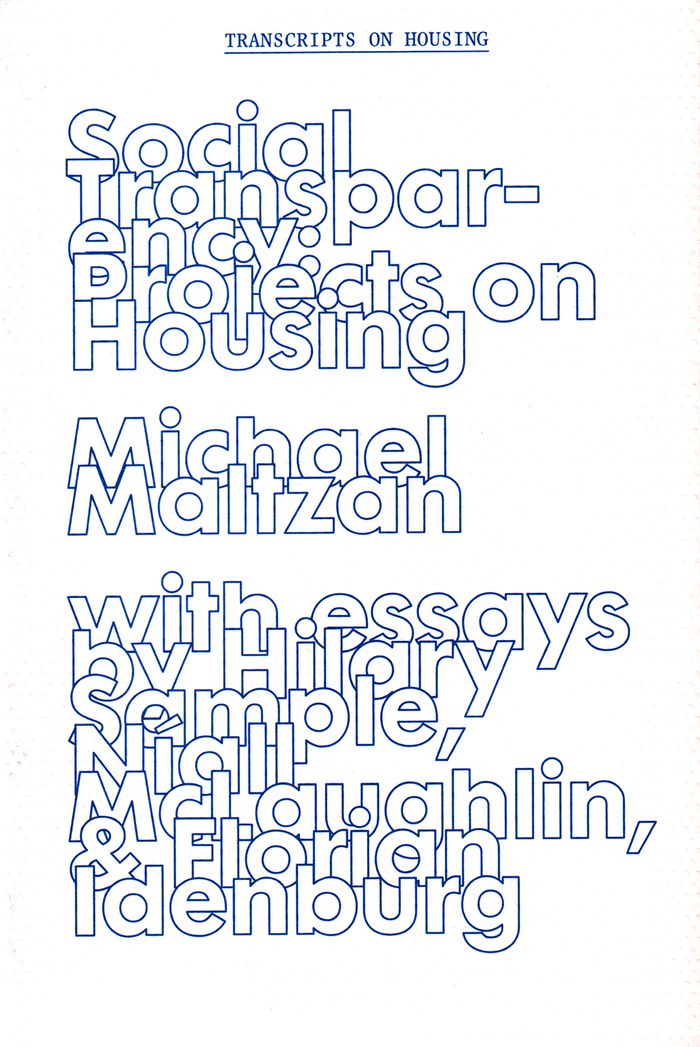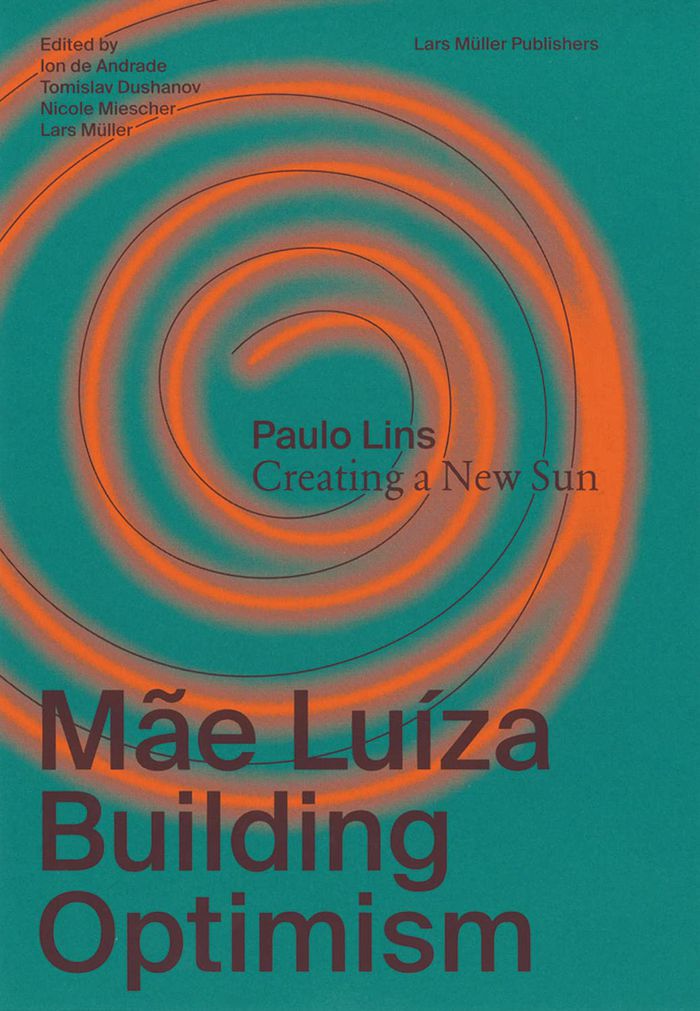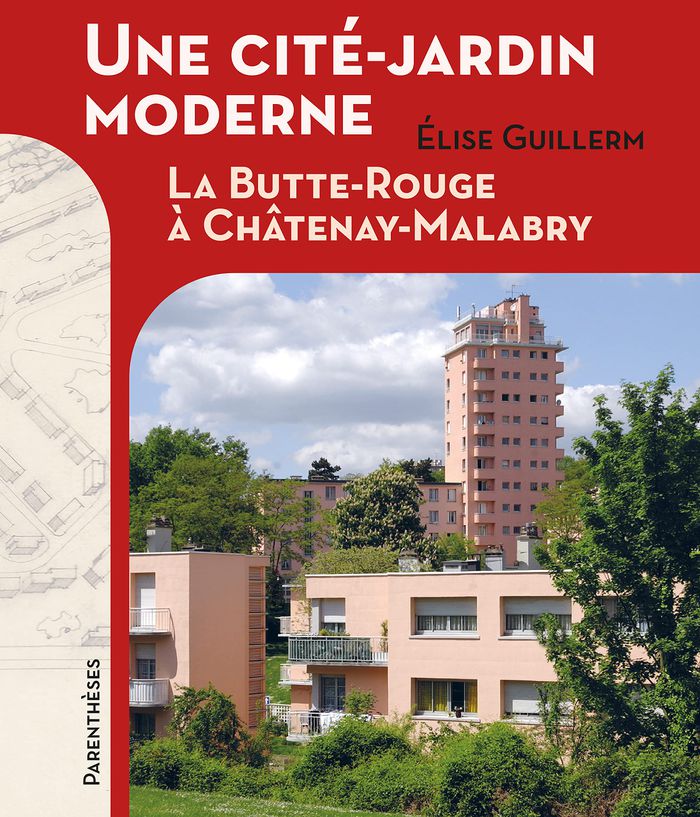$49.95
(available to order)
Summary:
The book examines the people, places, and policies that have helped make New York livable, from early experiments by housing reformers and the innovative public-private solutions of the 1970s and 1980s to today’s professionalized affordable housing industry. More than two dozen leading scholars tell the story of key figures of the era, including Fiorello LaGuardia, Robert(...)
Collective Housing
December 2015
Affordable housing in New York
Actions:
Price:
$49.95
(available to order)
Summary:
The book examines the people, places, and policies that have helped make New York livable, from early experiments by housing reformers and the innovative public-private solutions of the 1970s and 1980s to today’s professionalized affordable housing industry. More than two dozen leading scholars tell the story of key figures of the era, including Fiorello LaGuardia, Robert Moses, Jane Jacobs, and Ed Koch. Over twenty-five individual housing complexes are profiled, including Queensbridge Houses, America’s largest public housing complex; Stuyvesant Town; Co-op City; and recent additions like Via Verde. Plans, models, archival photos, and newly commissioned portraits of buildings and tenants put the efforts of the past century into social, political, and cultural context and look ahead to future prospects for below-market subsidized housing.
Collective Housing
$76.95
(available to order)
Summary:
Soviet mass housing is a contradictory but unique phenomenon. It is usually blamed for creating the most monotonous built environment in the history of mankind, thus constituting a symbol of individual suppression and dejection. The construction programme launched in the post-Stalinist era was the largest undertaken in modern architectural history worldwide. At the same(...)
Towards a Typology of Soviet Mass Housing: Prefabrication in the USSR 1955 a 1991
Actions:
Price:
$76.95
(available to order)
Summary:
Soviet mass housing is a contradictory but unique phenomenon. It is usually blamed for creating the most monotonous built environment in the history of mankind, thus constituting a symbol of individual suppression and dejection. The construction programme launched in the post-Stalinist era was the largest undertaken in modern architectural history worldwide. At the same time, Soviet mass housing fulfilled a colossal social role, providing tens of millions of families with their own apartments. It shaped the culture and everyday life of nearly all Soviet citizens. Yet, due to the very scale of construction, it managed to evolve into a complex world denoting an abundance of myths and secrets, achievements and failures. Soviet mass housing is indisputably intriguing, but nevertheless it is still neglected as a theme of research. Therefore, the time is ripe for a critical appraisal of this ambitious project. The authors aim to identify the most significant mass housing series designed and engineered from Kaliningrad to Vladivostok.
Collective Housing
$32.00
(available in store)
Summary:
For the past decade, the Los Angeles architect Michael Maltzan has designed multiunit housing in a city known for its proliferation of single-family residences. Working with the Skid Row Housing Trust, these projects advance new forms of supportive housing that address the services and infrastructures needed for their particular populations of inhabitants. For Maltzan,(...)
Social transparency: projects on housing
Actions:
Price:
$32.00
(available in store)
Summary:
For the past decade, the Los Angeles architect Michael Maltzan has designed multiunit housing in a city known for its proliferation of single-family residences. Working with the Skid Row Housing Trust, these projects advance new forms of supportive housing that address the services and infrastructures needed for their particular populations of inhabitants. For Maltzan, housing manifests an incredibly complex set of spatial problems—social, economic, political, typological, aesthetic, and urban—that recast architecture's role in framing the social relationships and individual challenges of everyday urban life. Social Transparency includes a recent lecture by Maltzan at Columbia University's Graduate School of Architecture, Planning and Preservation, as well as reflections from fellow practitioners—Amale Andraos, Hilary Sample, Florian Idenburg, and Níall McLaughlin—on this sustained engagement with housing and the city.
Collective Housing
Mãe Luíza: Building optimism
$61.50
(available to order)
Summary:
Over the past 30 years, the district of Mãe Luíza in Brazil's northeastern city of Natal developed from a desolate favela into a functioning community. From the first humanitarian aid to construction of a gymnasium, this persistent process is outlined in short articles and essays in the second part of this illustrated volume. The documentation demonstrates how(...)
Collective Housing
March 2022
Mãe Luíza: Building optimism
Actions:
Price:
$61.50
(available to order)
Summary:
Over the past 30 years, the district of Mãe Luíza in Brazil's northeastern city of Natal developed from a desolate favela into a functioning community. From the first humanitarian aid to construction of a gymnasium, this persistent process is outlined in short articles and essays in the second part of this illustrated volume. The documentation demonstrates how transformation was achieved step by step with the help of many, laying the groundwork for ongoing progress. Less crime, better education, and a fairer society – much has been accomplished and even more is possible for the future. A story by author Paulo Lins (“City of God”) tells the stirring tale of the establishment of the Brazilian favela Mãe Luíza. Fleeing drought and deadly heat, the people there fought for a piece of land to call their own, hoping for a better life. Thanks to their optimism and solidarity, their vision gradually took shape.
Collective Housing
$65.95
(available to order)
Summary:
Parés d’un rose qui fait leur unité, les immeubles de la cité jardin de la Butte-Rouge à Châtenay-Malabry se découpent sur le paysage verdoyant de la forêt de Verrières. Cet ensemble homogène érigé sur plusieurs décennies, très tôt labellisé « Patrimoine du xxe siècle », ne manque pas d’arguments pour revendiquer le statut de chef-d’œuvre de l’architecture moderne. Pour(...)
Une cité-jardin moderne : La Butte-Rouge à Châtenay-Malabry
Actions:
Price:
$65.95
(available to order)
Summary:
Parés d’un rose qui fait leur unité, les immeubles de la cité jardin de la Butte-Rouge à Châtenay-Malabry se découpent sur le paysage verdoyant de la forêt de Verrières. Cet ensemble homogène érigé sur plusieurs décennies, très tôt labellisé « Patrimoine du xxe siècle », ne manque pas d’arguments pour revendiquer le statut de chef-d’œuvre de l’architecture moderne. Pour autant, faute d’une protection suffisante, l’ensemble de la Butte-Rouge est la cible de projets qui, menés à terme, anéantiraient toute sa cohérence architecturale et paysagère et, avec, sa vocation première. Conçu comme un lieu de sauvegarde de l’histoire de la Butte-Rouge, ce livre monographique qui plaide en faveur d’une préservation fidèle du bâti, souligne avec acuité les limites de l’action publique contre les dégâts de la spéculation immobilière et la banalisation des héritages récents. À sa façon, il appelle à ce que les icônes du logement social et collectif soient considérées en France comme de dignes empreintes de notre histoire architecturale, à défendre et à vivre.
Collective Housing
Les Grands Ensembles
$14.95
(available to order)
Summary:
Symbole de modernité et enjeu aussi politique que sécuritaire dès les années 1980, les Grands Ensembles ont, dans le champ de la création contemporaine, nourri un certain nombre de recherches alliant architecture, habitat social et représentations visuelles. À partir d’œuvres produites depuis une vingtaine d’années environ (de Valérie Jouve, Mohamed Bourouissa, Martha(...)
Les Grands Ensembles
Actions:
Price:
$14.95
(available to order)
Summary:
Symbole de modernité et enjeu aussi politique que sécuritaire dès les années 1980, les Grands Ensembles ont, dans le champ de la création contemporaine, nourri un certain nombre de recherches alliant architecture, habitat social et représentations visuelles. À partir d’œuvres produites depuis une vingtaine d’années environ (de Valérie Jouve, Mohamed Bourouissa, Martha Rosler, David Hammons, Nathanaël Abeille, Stefan Eichhorn, etc.), cet ouvrage propose une lecture des rapports entretenus entre art et logement social, plus spécifiquement autour des Grands Ensembles. Entre idéalisation et rejet, ces derniers condensent en effet depuis les années 1950 l’essentiel des questionnements sur la ville, sur l’habitat populaire et sur la banlieue en tant qu’espace périphérique.
Collective Housing
Mid-rise urban living
$107.99
(available to order)
Summary:
This book argues that the mid-rise way of urban living is an essential component of growing cities, demonstrating that the economics of this form of development are better than that of terrace houses or town houses. It begins by examining successful historic precedents of this housing type, such as the tenements of Paris, Amsterdam, Berlin, Barcelona and New York and(...)
Mid-rise urban living
Actions:
Price:
$107.99
(available to order)
Summary:
This book argues that the mid-rise way of urban living is an essential component of growing cities, demonstrating that the economics of this form of development are better than that of terrace houses or town houses. It begins by examining successful historic precedents of this housing type, such as the tenements of Paris, Amsterdam, Berlin, Barcelona and New York and successful mid-rise housing in London. The book then discusses reasons for the relative lack of contemporary mid-rise housing developments, including planning legislation, and the perception that it is a dull and uniform building type.
Collective Housing
$60.00
(available to order)
Summary:
This book is a study of architectural infrastructure for state-provided accommodation for refugees in Germany. During the so called European migrant crisis from 2015 on Germany got known for its ''welcome culture'' towards refugees. Since 2015 millions of refugees have arrived to the country and the state has had to react quickly trying to provide sufficient housing for(...)
Arriving: About the architecture of refugee accommodation in Germany
Actions:
Price:
$60.00
(available to order)
Summary:
This book is a study of architectural infrastructure for state-provided accommodation for refugees in Germany. During the so called European migrant crisis from 2015 on Germany got known for its ''welcome culture'' towards refugees. Since 2015 millions of refugees have arrived to the country and the state has had to react quickly trying to provide sufficient housing for the immigrants. In the fast paced urban planning process material and immaterial borders are created, making it challenging for the refugees to settle. Through photographic documentation, aerial views and official documents of regulations regarding refugee housing complexes the book raises a questions about the architecture’s impairing effects for refugees integration to German society.
Collective Housing
$35.00
(available to order)
Summary:
Forecolosed: Rehousing the American Dream is an exploration of new architectural possibilities for American cities and suburbs in the aftermath of the recent foreclosure crisis in the United States. During the summer of 2011, five interdisciplinary teams of architects, urban planners, ecologists, engineers and landscape designers were enlisted by The Museum of Modern(...)
Foreclosed: rehousing the American dream
Actions:
Price:
$35.00
(available to order)
Summary:
Forecolosed: Rehousing the American Dream is an exploration of new architectural possibilities for American cities and suburbs in the aftermath of the recent foreclosure crisis in the United States. During the summer of 2011, five interdisciplinary teams of architects, urban planners, ecologists, engineers and landscape designers were enlisted by The Museum of Modern Art, New York, and MoMA PS1 to envision new housing infrastructures that could catalyze urban transformation, particularly in the country’s suburbs. Drawing on ideas proposed in The Buell Hypothesis, a research publication prepared by the Temple Hoyne Buell Center for the Study of American Architecture at Columbia University, each team focused on a specific location within a “megaregion” to come up with inventive solutions for the future of housing and cities. This publication presents each of these proposals (exhibited at MoMA in Spring 2012) in detail, through photographs, drawings and renderings as well as interviews with the team leaders. Foreclosedexamines the relationship between land, infrastructure and urban form, exploring potential futures for America’s extended metropolises.
Collective Housing
$45.00
(available to order)
Summary:
Addressing East Asia’s rapid urban transformation, The Vertical Village looks at radical alternatives to the familiar standardized block architecture that has eradicated low-rise, “lighter” varieties of architecture, such as the Hutong in Beijing, Tokyo’s wooden house and the villages of Singapore. These “urban villages” have fostered a connected community living instead(...)
The vertical village: individual, informal, intense. The Why factory
Actions:
Price:
$45.00
(available to order)
Summary:
Addressing East Asia’s rapid urban transformation, The Vertical Village looks at radical alternatives to the familiar standardized block architecture that has eradicated low-rise, “lighter” varieties of architecture, such as the Hutong in Beijing, Tokyo’s wooden house and the villages of Singapore. These “urban villages” have fostered a connected community living instead of isolating citizens in tower blocks. This volume, the latest publication from The Why Factory, attempts to reconcile the two models, proposing a contemporary “vertical village” that restores neighborhood life to East Asian--and perhaps western--civic centers. It features innovative designs for high-rise structures, detailed case studies for Tokyo, Beijing, Shanghai, Taipei, Djakarta, Seoul and Bangkok, plus interviews with Winy Maas, Alfredo Brillemburg, Hubert Klumpner, Lieven De Cauter, Peter Trummer and families living in Taipei (where the originating Why Factory exhibition was held).
Collective Housing









